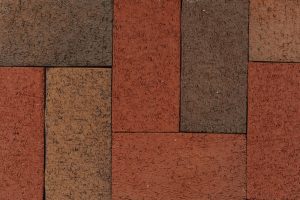A Comprehensive Guide to Cast Stone and Its Applications
Selecting the ideal material for a construction project is a crucial decision that significantly impacts the outcome. Among the many materials to consider, cast stone stands out as an effective alternative to natural building stones. Cast stone has a long history, with its earliest use dating back to 1138. Designed to replicate natural stone, it offers a blend of affordability, prestige, and versatility, making it popular across various applications. Whether it’s for structural elements or architectural details, cast stone delivers a durable and aesthetically pleasing solution.
Cast stone is defined as a refined architectural concrete building unit created to simulate natural cut stone. It has been a prominent construction material since the early 20th century and is often used to replicate the appearance and texture of natural cut stones. However, like any material, cast stone has its pros and cons. Its main advantages are its flexibility in design, strength, and cost-effectiveness. On the downside, it may require occasional maintenance to retain its appearance.
The history of cast stone stretches back thousands of years to ancient Rome, where it was made using pozzolanic cement combined with natural aggregates like limestone and gravel. It was commonly used for significant structures like the Colosseum and the Pantheon, highlighting its strength and versatility. In the Middle Ages, cast stone was primarily used by artists for ornamental purposes, allowing them to create detailed, mass-produced decorations for churches and castles. The material’s popularity grew in the 19th and early 20th centuries, with the first commercial production occurring in London in the 1820s. By the early 1900s, cast stone had gained widespread acceptance in America, leading to a resurgence in its use in contemporary construction.
Cast stone is composed of a cementitious binder and natural aggregates, resembling natural stone in both appearance and application. It is also known by other names, such as reconstituted stone, synthetic stone, or artificial stone. The basic composition includes Portland cement, sands, and crushed stone, often with added mineral pigments to achieve desired colors. The manufacturing process involves pouring the mixture into molds, allowing it to set and harden. The end result is a strong, lightweight material that is easy to transport, install, and customize.
There are three primary methods for producing cast stone: semi-dry, wet-cast, and fiber-reinforced. The semi-dry method uses minimal water, enabling quick production of large quantities. The wet-cast method, on the other hand, requires more water and produces a denser, smoother finish suitable for larger structural elements. Fiber-reinforced cast stone incorporates glass fibers into the mix, enhancing tensile strength and making it ideal for retrofitting and new builds.
Cast stone must meet strict technical standards to ensure consistent quality. In the United States, it adheres to ASTM C 1364 standards, while in Europe, it follows BS 1217 specifications. These standards dictate the material’s density, compressive strength, and moisture absorption, ensuring its reliability for various applications. The typical density of cast stone is around 135 PCF, with a minimum compressive strength of 6500 psi and a maximum moisture absorption of 6%.
Different types of cast stone, including dry cast, wet-cast, and fiber-reinforced, offer unique characteristics and advantages. Dry cast stone mimics natural limestone in texture and strength, making it ideal for weathered, traditional aesthetics. Wet-cast stone is denser and smoother, making it suitable for features like columns and fireplaces. Fiber-reinforced cast stone is lighter, with a high strength-to-weight ratio, making it perfect for modern construction projects that require reduced load on the structure.
Cast stone offers several benefits, including its lightweight nature, easy manufacturing, and vast design possibilities. It can be produced in various shapes, sizes, and colors, making it highly adaptable for different architectural styles. Its physical durability makes it suitable for structural elements, while its freeze-thaw resistance and minimal maintenance make it a reliable choice for long-term use. Additionally, cast stone can include steel reinforcement, enhancing its strength and making it suitable for load-bearing applications.
Cast stone has a wide range of applications, from structural components and internal features to moldings, columns, and decorative elements. It is used in new builds, extensions, refurbishments, and architectural restorations. The material is commonly seen in keystones, window heads, porticos, cornices, and even as ornaments and trim. Its ability to blend seamlessly with different architectural styles makes it a versatile choice for both modern and traditional designs.
In terms of longevity, cast stone can rival natural stone. Properly installed cast stone from the early 20th century still exists in good condition today, requiring minimal repairs. However, like all building materials, cast stone can deteriorate over time due to separation of core and facing layers, aggregate breakdown, or deterioration of cementing matrix. Steel reinforcements, anchors, and cramps may also deteriorate, affecting the stone’s overall integrity.
While cast stone is generally low-maintenance, some cleaning and occasional repointing may be necessary to extend its lifespan. Cleaning involves removing grime with a soft brush and using the appropriate cleaning agent based on the stone’s composition. For repointing, it is essential to match the mortar color and texture to maintain the aesthetic integrity of the cast stone.
Cast stone differs from natural stone in several ways. Natural stone is formed over millions of years, making it denser and more durable. However, cast stone offers uniformity, consistency, and ease of installation. It can be manufactured to match specific design requirements, providing versatility not always possible with natural stone. Additionally, natural stone varies in color and texture, making exact matching difficult, whereas cast stone offers consistent results.
The choice between cast stone and natural stone depends on factors like design preferences, project scope, and desired appearance. Cast stone provides a cost-effective, durable, and versatile solution that simulates the look of natural stone. Whether used for structural or decorative purposes, it offers numerous benefits, making it a popular choice in both modern and historical construction. When selecting a building material, understanding the properties, advantages, and limitations of cast stone can help you make an informed decision for your project.

